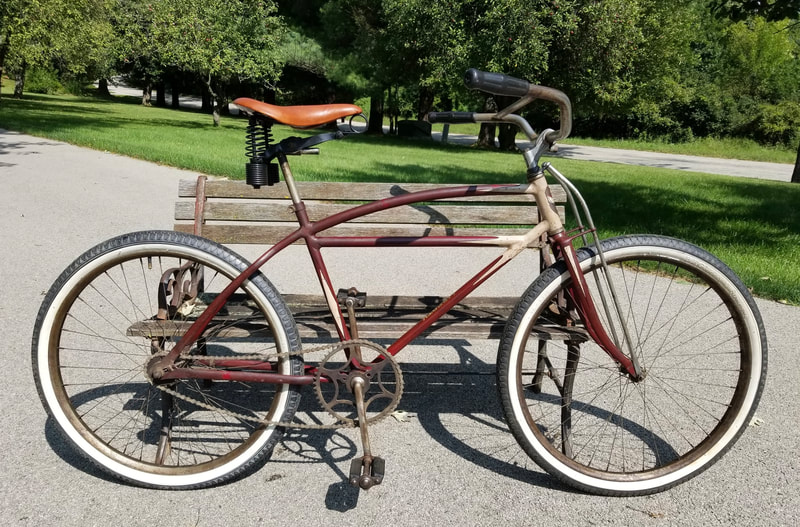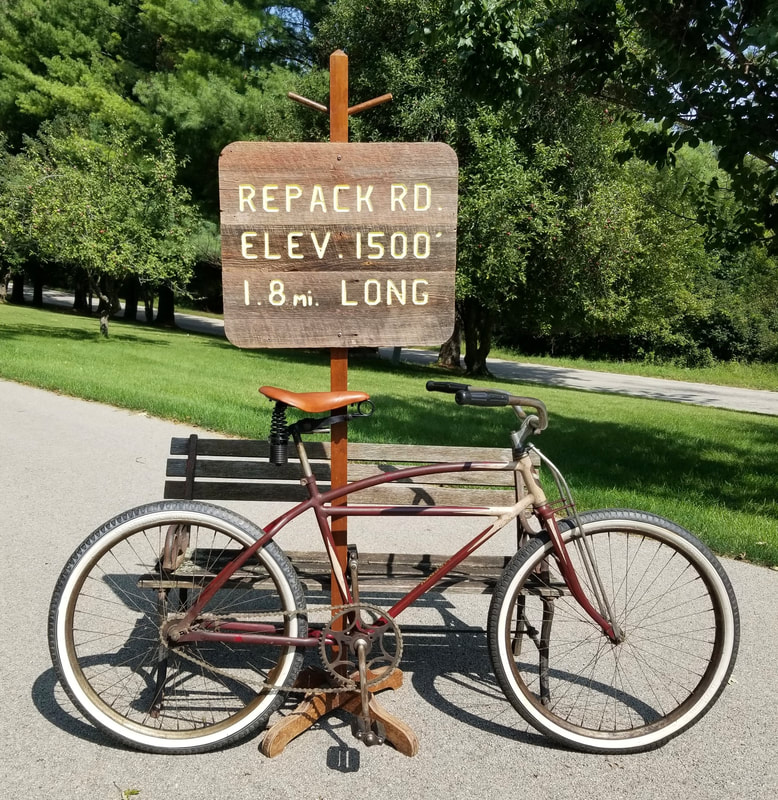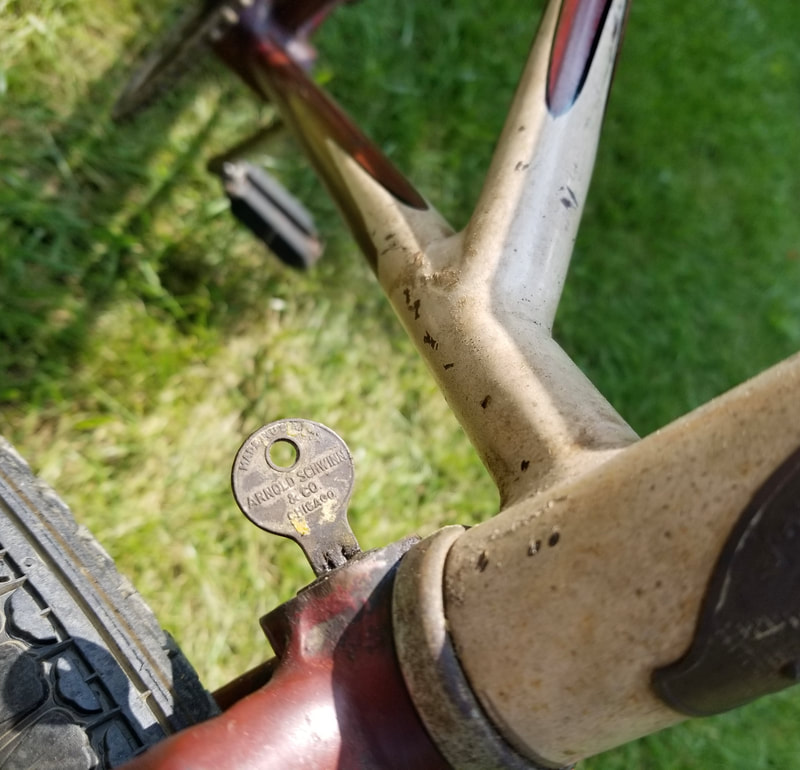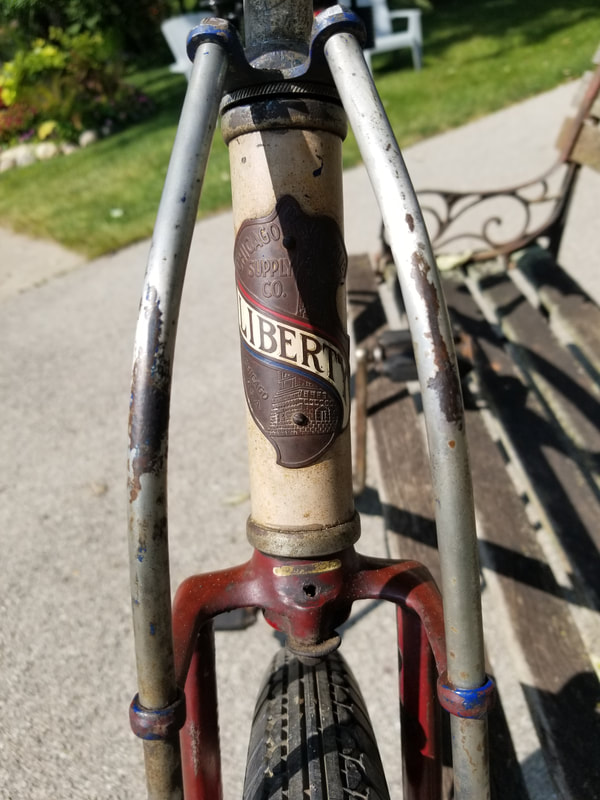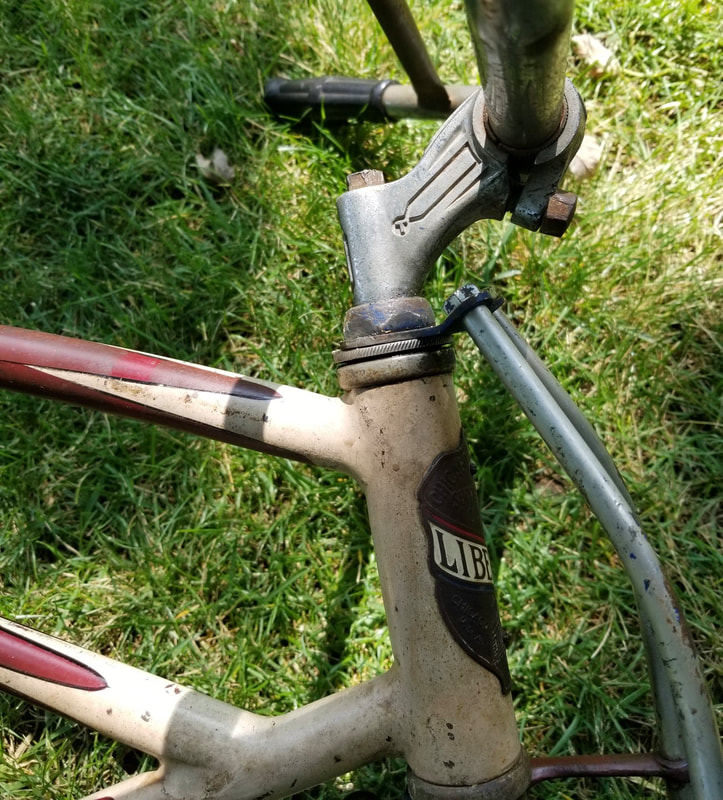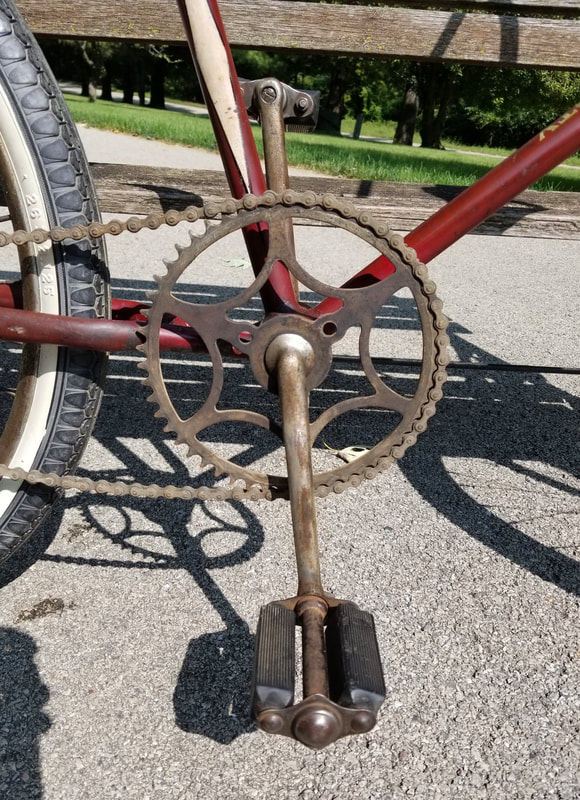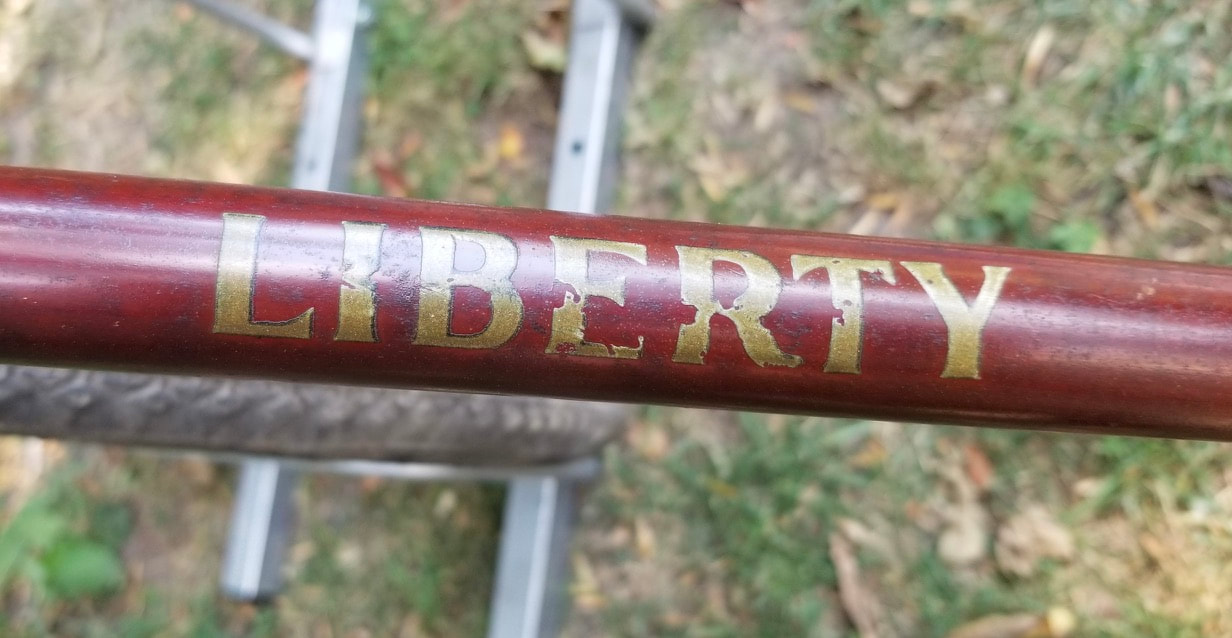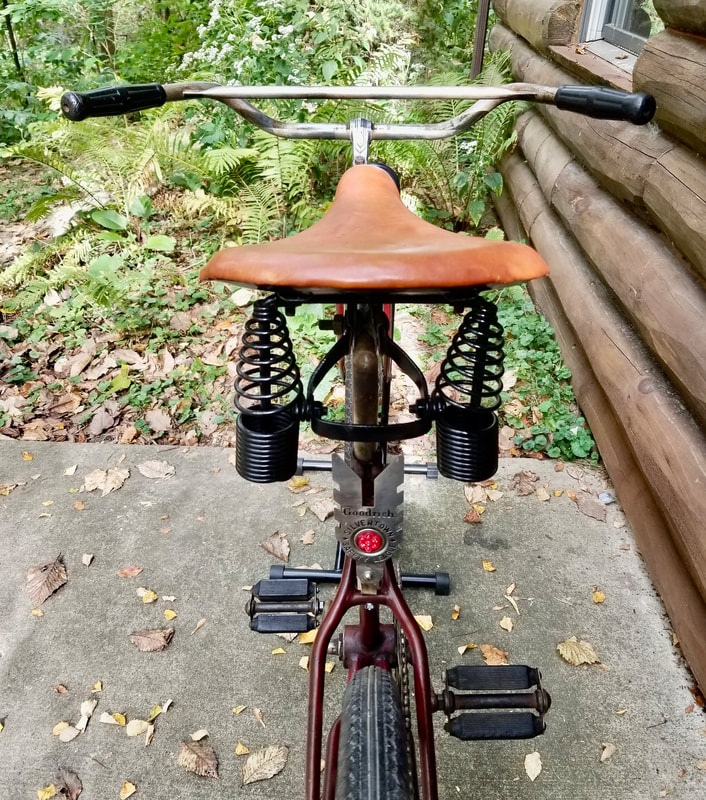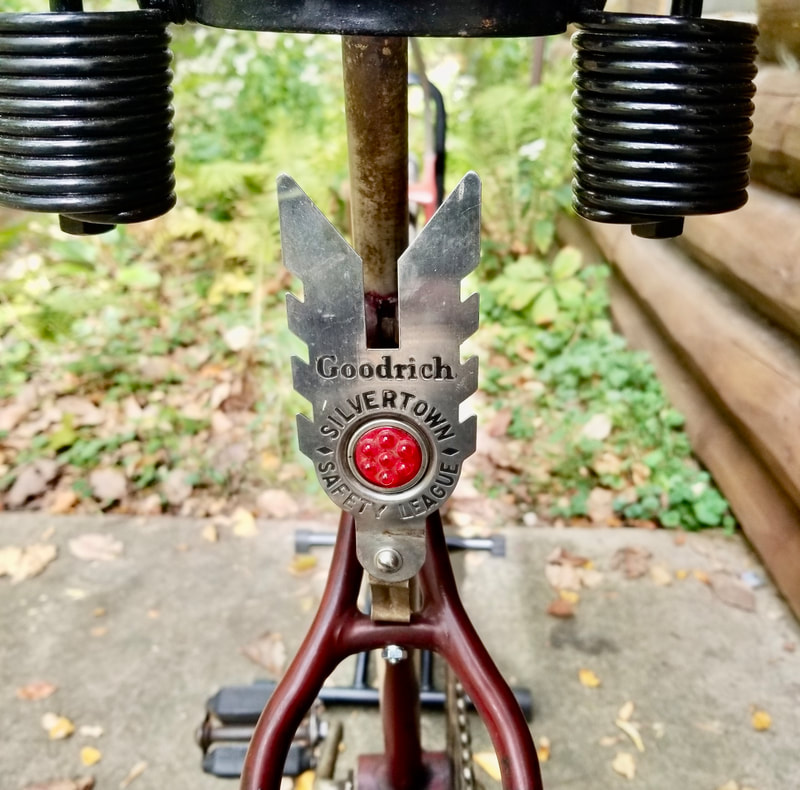I found this 1936 Schwinn Liberty in a small Kansas town, population 480, where it had lain untouched for decades. The tank, Delta lamp, and carrier had been lost long ago; the fenders were toast, so I decided that this classic was the perfect candidate for a first generation Klunker. Once my friend Charlie and I had removed layers of dirt and grease, we found the beautiful paint you see here. (Originally red, there is now a mellow patina of maroon only time can produce).
The bike is just as I discovered it, with locking fork, crossbar handlebars, truss rods, Torrington pedals, and art deco stem. I've added a recovered saddle (chassis identical to the original) and NOS B.F. Goodrich Silvertown tires. Note: Yes, the chain needs tightening.
One of the unique features of bicycle collecting is that so long as the frame remains unmolested, one can always restore a bike like this to its original motorbike configuration (although finding a tank, fenders and carrier with matching patina is an unlikely prospect). Why not appreciate this find as it is? Shorn of the flashy gingerbread, the clean lines of a 1930s double bar Schwinn have a beauty all their own.
The bike is just as I discovered it, with locking fork, crossbar handlebars, truss rods, Torrington pedals, and art deco stem. I've added a recovered saddle (chassis identical to the original) and NOS B.F. Goodrich Silvertown tires. Note: Yes, the chain needs tightening.
One of the unique features of bicycle collecting is that so long as the frame remains unmolested, one can always restore a bike like this to its original motorbike configuration (although finding a tank, fenders and carrier with matching patina is an unlikely prospect). Why not appreciate this find as it is? Shorn of the flashy gingerbread, the clean lines of a 1930s double bar Schwinn have a beauty all their own.
1936 Schwinn Liberty First Generation Klunker ©Daniel Dahlquist
